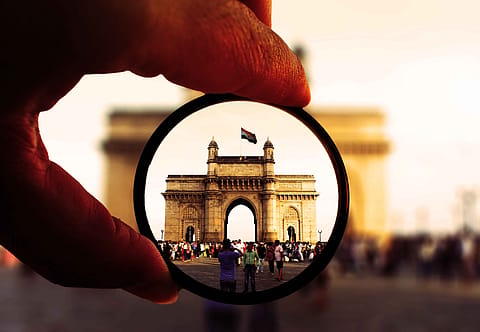What the Shivaji statue will see – (hint: a failed) Bombay
The statue will beat the Sardar Patel statue in neighbouring Gujarat by a full 50 metres, and would be in the image of the medieval Maratha warrior-king Shivaji.

2021 will be an interesting year for the city of Mumbai, once called Bombay. It will be the year when off its coastline, in the waters of the Arabian Sea, most likely, the world’s tallest statue will come up.
The statue, at a height of 212 metres, will beat the Sardar Patel statue in neighbouring Gujarat by a full 50 metres, and would be in the image of the medieval Maratha warrior-king Shivaji.
Now there is nothing wrong in having nations wanting tall status symbol statues as I have explained in my essay supporting the Patel statue at Fortune India’s sister news website, Telegraph India especially since both the states that are funding these sculptures, Gujarat and Maharashtra, are two of the richest in India.
Maharashtra, in fact, is the richest large state in India. Not only that, as a Barclays Hurun India Rich List survey showed earlier this year, most of the wealthiest Indians living in India live in Maharashtra. There is, of course, no historical figure more revered in Maharashtra than Shivaji; usually, even his name is almost never taken in the state without the salutary epithet Maharaj (King of Kings)–indeed he is among the few most admired valorous heroes of Indian history.
So far so good, except the Shivaji statue will gaze upon the city of Mumbai, India’s hyped but dying financial capital. The statue, a dazzling projection of nationalism and rising power dramatics, will have no choice but to stand in stark contrast every day to what is almost (many would say, already) India’s first failed city.
Even the most conservative estimate suggests that more than 40% of Mumbai’s citizens live in slums. More than 7,000 metric tonnes of garbage are churned out every day, but waste management systems are so inadequate that poisonous fires are common amidst its mountains of trash–so common, in fact, that it formed a memorable scene in Netflix’s hit gangster show in India called Sacred Games.
The inner-city train system is forced to carry three times its capacity of passengers, some 7.5 million daily. More than 3,000 people die in train accidents every year.
Recommended Stories
The city brings in around 30% of India’s tax collections, 40% of foreign trade, 60% customs duty collections and accounts for more than 6% of the national GDP. In 2017, it ranked 17th in a global list of 20 top cities in the world according to GDP by the real estate consultancy Jones Lang LaSalle. Still, no one can convincingly say why its bridges were never repaired–some even after they had been put on a fragile list–except that it was probably someone else’s job.
Mumbai’s traffic is so unbearable that it is a standard joke in the city that it might be easier to fly out rather than go across town. When a citizen’s group started counting potholes in the city this year, they were aiming to find 20,000. They found 26,934. Some joked that this ought to get Mumbai a spot in the Guinness Book of World Records.
If driving is tough, so is breathing in Mumbai. In the latest ranking of the World Health Organization, Mumbai ranked fourth among global megacities most affected by air pollution.
In the summer of 2005, Mumbai had one of the worst floods in its history. Over a 24-hour period, it rained more than it had in 100 years. Around 1,000 people died. Since then, every year the city gets flooded. Every year there is outrage–and nothing has changed. Except that the downpour has not been as powerful–no one doubts that if that kind of rain fell on the city again, even more people would die compared to 2005.
The people of Mumbai used to once cheer themselves by talking about the ‘spirit of Mumbai’–that is, it could bounce back from any crisis. Now any mention of the spirit of Mumbai comes usually in dark and abusive WhatsApp exchanges.
All these things are antithetical to the achievements of Shivaji who built a series of strategically important and picturesque forts across the Western Ghats in Maharashtra. Most of those forts lie in ruins.
Therefore, it is unlikely that it would be a happy spirit of Shivaji who will gaze through his statue at Bombay. Yes, since the name change has brought no improvement to the conditions in the city, the one rebellious act is to keep referring to it by its old glorious name, Bombay.